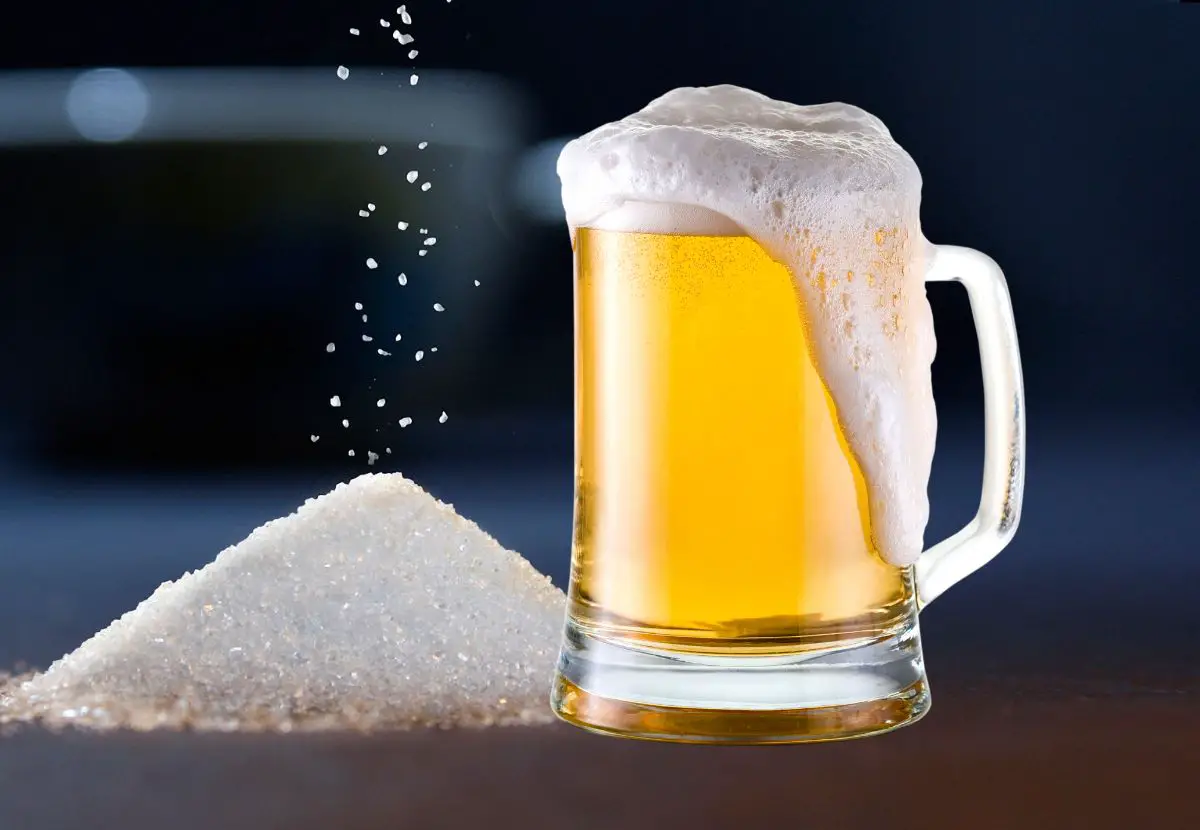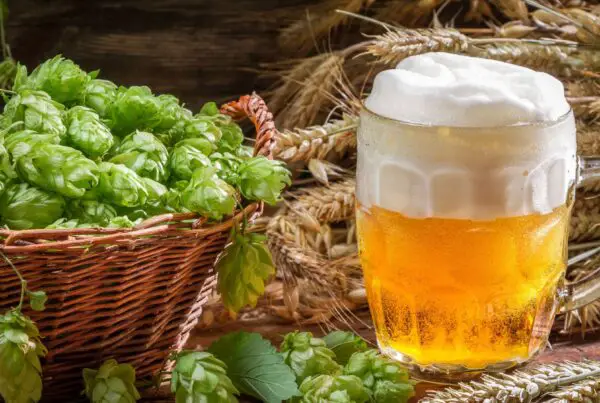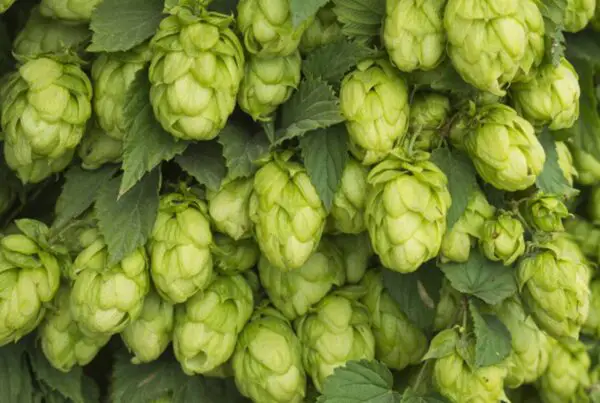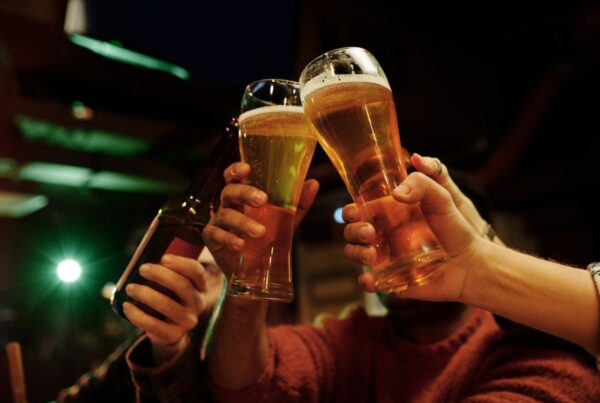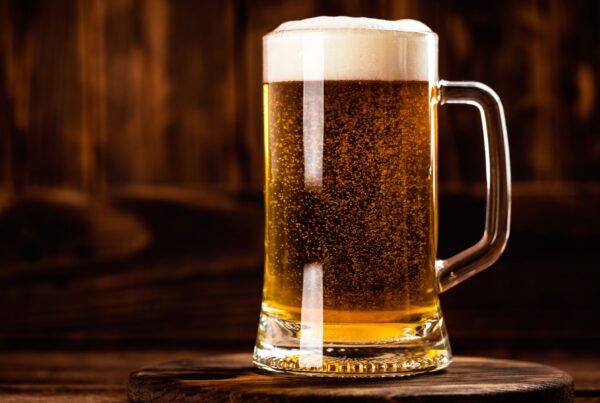Does Beer Have Sugar?
Introduction: A Frothy Overview of Beer and Sugar
The Sacred Quartet of Beer Brewing: Yeast, Grains, Hops and Water
When it comes to beer brewing, four cardinal ingredients take the center stage. These are yeast, grains—primarily barley—hops, and water.
This quartet creates a symphony of flavors that we’ve grown to love in our frothy brews. The process starts with malting the grains which is essentially just soaking them in water until they germinate then drying them in a kiln.
Then comes mashing where the malted grains are steeped in hot water releasing their sweet sugars. But why do we need sugar in beer you ask?
Well, this sugary concoction is now ready for its date with yeast – an organism with an insatiable appetite for sugar! As it feasts on the sugar, it produces alcohol and carbon dioxide – thus giving beer its intoxicating charm and effervescence.
Sugar’s Sweet Role In The Process
The sugars derived from grains play a crucial role during fermentation – they’re food for our microscopic friend, yeast! But not all sugars are equally appealing to these little creatures. While they gorge on simple sugars like glucose pretty quickly (something reminiscent of how quickly some of us finish our dessert plates), complex sugars like dextrins often remain untouched.
These residual dextrins contribute to the body (thickness or mouthfeel) and sweetness of the final product as the human palate cannot perceive them as sweet. So while you might think your stout or IPA is loaded with sugar due to its malty sweetness or fuller body, it might not be quite so straightforward!
Yes indeed my friend—the world of beer brewing is quite intriguingly convoluted! The tale doesn’t end here though; let’s embark further into this effervescent journey to understand how the sugar saga differentiates across various beer types.
Ready with your brew? Let’s go!
The Brewing Process: Where Sugar Comes In
Crafting the Sweet Elixir: The Mashing Process
The first soiree in the crafting of beer is known as mashing. This process is where grains, usually barley, are soaked in hot water to release their sugars.
Think of it like a teabag steeping in a cup of boiling water, enticing the flavors to dance free. Imagine each grain as a microscopic piñata, filled with sugar that is just waiting to be released.
The hot water acts like our metaphorical bat, smashing open these piñatas and allowing the sweet innards to flow out. After this soaking period, the grains are rinsed and we’re left with a sugary liquid called malt.
This malt is essentially the backbone of your beer – providing both flavor and the necessary sugars for fermentation. Without this sugar-packed malt, our beer would be nothing more than bitter hop water.
Fermentation: A Yeast’s Feast
Following mashing comes fermentation – or as I like to call it, yeast’s dinner party with sugar! Here’s where things get lively; yeast is introduced into this sweet concoction and boy does it have an insatiable sweet tooth! Yeast adores sugar so much that it gobbles up as much as it can find in the malt we previously produced.
As yeast feasts on these sugars, it produces alcohol and carbon dioxide – which give our beloved brew its punch and bubbly persona respectively. It’s kind of poetic when you think about it; every sip of your frosty brew embodies millions of tiny organisms celebrating their feast by producing beautiful bubbles and uplifting spirits!
Residual Sugars: Those Who Missed Out On The Party
Not all sugars in beer get consumed during fermentation though – some are considered the wallflowers of this yeast party. These sugars, aptly named residual sugars, remain unfermented and add a distinct sweetness to the beer. In some types of beer, like stouts or porters, these leftover sugars are intentionally left behind to contribute to a hefty body and creamy mouthfeel.
Other times, these wallflower sugars might just be too complex for the yeast to break down and enjoy at their party – think of it as arriving at a potluck with a gourmet dish too sophisticated for most palates! So yes, in both overt and covert ways, sugar plays quite the leading role in brewing your favorite pint.
Different Types of Beers and Their Sugar Content
The Lean Contenders: Lagers and Pilsners
Those who prefer a lighter touch in their brews will be pleased to know that Lagers and Pilsners are the lean guys on the block when it comes to sugar content. These beers, known for their crisp, clean profiles, have undergone a longer fermentation process.
This allows the yeast more time to consume the available sugars, resulting in a drier finish with less residual sweetness. Indeed, it is this balance of flavors without excessive sugar that gives Lagers and Pilsners their refreshing quality.
You’ll find these brews on average contain around 2-3 grams of sugar per pint. So if you’re mindful about your sugar intake but aren’t quite ready to relinquish your beer-drinking privileges just yet, these slender options might just be for you.
The Sweet Side of Bitter: IPAs and Stouts
IPAs and Stouts – they pack more than just robust flavors; they also tend to carry more sweetness than their Lager counterparts. The difference lies in the brewing process—these styles typically use more malt or grains which add both flavor intensity and higher sugar content. It’s not uncommon for a standard IPA or Stout to contain upwards of 5-7 grams of sugar per pint.
However, don’t let that discourage you from indulging in these richly flavored beers – moderation is key! Besides, isn’t there something irresistibly poetic about savoring an IPA’s complex dance between its bitter hops profile and its subtle saccharine undertones?
Sweetness Through Complexity: Sours & Fruit Beers
Last but certainly not least on our sugary beer journey are Sours and Fruit Beers – an intriguing mix between sweet, sour, even tart at times, and everything in between. These beers incorporate fruit to add flavor, which naturally comes with additional sugar. However, don’t be fooled into thinking these are sugar bombs waiting to explode.
The fermentation process tends to eat up most of the fruit sugars, leaving behind its essence and flavors. Typically, you can expect a sour or fruit beer to have around 4-5 grams of sugar per pint – a happy medium if ever there was one!
So go ahead—embrace the complexity and enjoy the symphony of flavors that is Sours and Fruit Beers. After all, variety is the spice of life—and apparently, also beer!
Light vs Regular Beer – Battle of the Sugars
The Slender Secret of Light Beers
In this corner, weighing in at notably fewer calories, we have the champion of the diet-conscious, light beer. The secret to its slim-line persona is rather simple: less alcohol and fewer carbohydrates.
Alcohol packs a considerable caloric punch, with nearly double the calories per gram compared to carbs and proteins. By reducing the alcohol content through various brewing techniques such as dilution or arrested fermentation, light beers manage to keep their calorie count in check.
But that’s only half the story. The second part involves cutting down on those pesky carbohydrates that can add significant calories without contributing much to flavor.
These carbs come from residual sugars left over after fermentation – remember those sugars that missed out on the yeast’s dinner party? Well, brewing techniques allow for maximizing the fermentation process so fewer sugars are left behind thus producing a beer lighter in both carbs and calories.
Regular Beers’ Overt Affection for Sugar
On our other corner is regular beer without any pretensions of being anything but itself – full-bodied and flavorful with an unapologetic love for sugar! Unlike their light counterparts who aim for leaner profiles, regular beers embrace their higher sugar content with open arms. The residual sugars not only contribute to added body and sweetness but also play an integral role in defining each brew’s unique character.
Not all sugars are created equal when it comes to beer. Simple sugars like glucose ferment completely leaving behind no sweetness whereas complex sugars such as maltotriose may only partially ferment resulting in some residual sweetness that influences flavor profile.
This is where regular beers have an edge over light beers – they don’t restrict themselves in pursuit of lower calorie counts and therefore explore a broader range of flavors enabled by embracing a bit more sugar. So there you have it – the sugar saga of light vs regular beers.
It isn’t just about winning the calorie count contest but also about crafting distinct flavors, body and textures! The choice, as always, is down to personal preference and individual health or dietary considerations.
“Sugar-Free” Beers – Truth or Marketing Gimmick?
The Ambiguities of ‘Sugar-Free’ Brews Unraveled
Teetering on the precipice of truth and trickery, the claim of “sugar-free” beers often bamboozles consumers. The fact is, completely sugar-free beer is virtually impossible to produce due to the inherent brewing process. During fermentation, yeast consumes most sugars, transforming them into alcohol and carbon dioxide.
However, some residual sugars invariably remain. When a beer is touted as ‘sugar-free’, it usually implies that minimal sugars are left post-fermentation or that artificial sweeteners have been used.
That said, it’s crucial to understand that ‘sugar-free’ doesn’t equate to ‘carb-free’. The carbohydrate content in beer doesn’t stem solely from sugar but also from the malted grains used in brewing.
These carbs can affect your health and diet goals significantly even if the beer is labeled as sugar-free. So, don’t let these lofty claims lead you down a garden path.
Low-Carb Beers – The Belt-Tightening Brew
Turning our gaze to low-carb beers brings us face-to-face with another fascinating paradox within this foamy fable of brews. A low-carb beer may still contain sugars while keeping its overall carbohydrate content low by predominantly using grains which yield fewer carbs during brewing. The underlying principles here revolve around adjusting the mashing process or cutting short the fermentation phase to curtail carbohydrates while ensuring sufficient alcohol content remains intact.
Opting for these beers can indeed be beneficial for those on a calorie-counting mission or following a keto diet where carb limitation is paramount. However, it’s important not to confuse low-carb beers with reduced-calorie ones – they’re not always one and the same.
Several low-carb beers may still pack a punch in terms of alcohol content and consequently, their calorie count could be higher than you’d anticipate. It’s always wise to delve beyond the surface and check the label to fathom what’s actually in your pint.
The Impact of Beer’s Sugar on Health & Fitness Goals
Calories in Beer – It’s Not Just About the Alcohol!
When it comes to the calorific content of beer, it’s important to remember that it’s not solely about the alcohol. The carbohydrates present, primarily in the form of residual sugars, also contribute significantly.
You may be surprised to know that a pint of beer has almost as many calories as a large slice of pizza! A typical lager contains around 150-200 calories per pint.
However, richer brews like stouts and IPAs can pack up to 300 calories or more. Bear in mind, these are empty calories meaning they provide no nutritional value.
And let’s face it; most beer drinkers aren’t sipping just one pint. As pints pile up, so do the calories.
This can obstruct your fitness goals if not balanced with adequate exercise and healthy eating habits.
Beer Belly Myth or Reality? – Understanding Beer’s Impact on Weight Gain
“Beer Belly” is a ubiquitous term associated with habitual beer drinking, but is there any truth behind this colloquial concept? Well yes, and no. For some people (mostly men), excess calories from alcohol tend to accumulate around their waistline due to how their bodies store fat; hence giving rise to ‘beer belly’.
In fact, studies have shown a correlation between heavy drinking and increased waist circumference. However, this doesn’t mean you’ll develop an iconic belly with casual or moderate drinking.
Above all else, weight gain occurs when you consume more calories than your body burns – irrespective of whether those extra calories come from beer, sugar-rich foods, or fatty foods. A balanced diet coupled with regular exercise is still your best defense against unwanted weight gain – whether you’re a beer lover or not. Understanding your brew better can help you make more informed decisions and enjoy your pint without the guilt.
Conclusion: To Drink or Not to Drink – Understanding Your Brew Better
Savoring the Symphony of Flavors Responsibly
There’s indeed a certain charm and delight in the slow sips of a cold brew, especially on a warm sunny day, or while cheering for your favorite team with friends. The yeasty aroma, the frothy head, and the complex flavors – beer is much more than just an alcoholic beverage; it’s an experience.
And our journey through its sugary landscape reveals that sugar plays an integral role in this experience – from being a crucial ingredient in fermentation to influencing flavor profiles across different beer styles. However, as with all good things in life, moderation is key.
While there’s no denying the craftsmanship and enjoyment that goes into brewing and consuming this age-old drink, it’s important to remember that beer – like any other alcoholic drink – should be enjoyed responsibly. Don’t let your love for this malted brew cloud your judgment about its impact on your health and well-being.
Understanding Your Brew: A Prelude to Healthy Drinking
Acknowledging that beer does contain sugar is probably the first step towards healthy drinking habits. This realization empowers you not only with awareness but also with a choice – choice of beers based on their sugar content (and thereby caloric content), or even opting for low-carb beers if you are conscious about your sugar intake. Remember though, ‘sugar-free’ doesn’t necessarily mean ‘calorie-free’ or ‘healthier’.
You still need to consider other factors like alcohol content which also contributes calories as well as potential health risks if consumed excessively over time. After all, understanding what goes into your pint can help you strike a balance between savoring your favorite brew and maintaining your health goals.
Fortunately, you can head over to our beer profiles section and check out your favorite beer’s calories and nutritional information!

